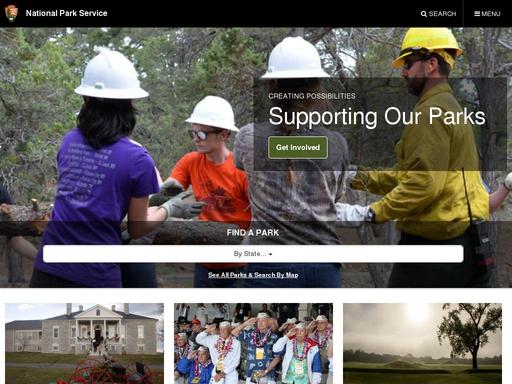Rate Cape Henry Memorial Part of Colonial National Historical Park
Learn and Explore
Since 1916, the National Park Service has been entrusted with the care of our national parks. With the help of volunteers and partners, we safeguard these special places and share their stories with more than 275 million visitors every year. But our work doesn’t stop there.
We are proud that tribes, local governments, nonprofit organizations, businesses, and individual citizens ask for our help in revitalizing their communities, preserving local history, celebrating local heritage, and creating close to home opportunities for kids and families to get outside, be active, and have fun.
Taking care of the national parks and helping Americans take care of their communities is a job we love, and we need—and welcome—your help and support.
Our Mission
The National Park Service preserves unimpaired the natural and cultural resources and values of the National Park System for the enjoyment, education, and inspiration of this and future generations. The Park Service cooperates with partners to extend the benefits of natural and cultural resource conservation and outdoor recreation throughout this country and the world.
Frequently Asked Questions
How do I obtain a park entrance pass?
Only 118 of your 417 park sites charge entrance fees. You can obtain park entrance passes by visiting a park site that charges an entrance fee. Entrance fee sites have passes available; we recommend calling a park prior to your visit. (See the park search to locate a specific park.) There are a number of entrance passes available, including park-specific passes as well as passes that offer entrance to more than 2,000 federal recreation sites in addition to the national parks (Annual, Military, Senior, 4th Grade, Access, and Volunteer passes). Learn more about the America the Beautiful – The National Parks and Federal Recreational Lands Pass.
About this location:
Part of Colonial National Historical Park
Operating Hours & Seasons
Cape Henry
Cape Henry is open year round. It is recommended that all visitation be conducted between the hours of dawn to dusk. Because Cape Henry is located on Fort Story Military Reservation it may be closed during periods of heightened National Security. Be prepared to stop at the entrance gate and have your drivers license ready. All vehicles are subject to inspection. This quarter acre of ground marks the approximate site of the first landing of the Jamestown settlers in Virginia.
Standard Hours
- Sunday: Sunrise – Sunset
- Monday: Sunrise – Sunset
- Tuesday: Sunrise – Sunset
- Wednesday: Sunrise – Sunset
- Thursday: Sunrise – Sunset
- Friday: Sunrise – Sunset
- Saturday: Sunrise – Sunset
Fees & Passes
Entrance Fees:
- $0.00 – Visitor Pass Issued By Military Personnel
Entrance is by visitor pass issued by military personnel at the entrance gate. Be prepared to stop and show your drivers license. Your vehicle may be inspected. Cape Henry is open year round. It is recommended that all visitation be conducted between the hours of dawn to dusk. Because Cape Henry is located on Fort Story Military Reservation it may be closed during periods of heightened National Security.
About
The beginning and end of British America has roots on these windswept sands
English colonists first landed here in April 1607, erected a wooden cross and gave thanks for a successful crossing to a new land. In 1781, Americans could watch from these same sand dunes the largest naval battle of the Revolutionary War. Our French Allies defeated a British fleet just off this shore to set the stage for General George Washington’s victory at Yorktown.
Directions
Located on the south side of the Chesapeake Bay, Cape Henry Memorial sits within the Joint Expeditionary Base Little Creek-Fort Story. From Interstate 64 E take exit 282 to merge onto US-13N/Northhampton Boulevard towards the Chesapeake Bay Bridge. Then take US-60 E/Shore Drive exit toward Beaches, this is the last exit before the Chesapeake Bay Bridge. Follow Shore Drive and turn left onto Atlantic Ave and proceed to Gate 8. Follow Atlantic Ave to Cape Henry Memorial.
Visitor Centers
No Visitor Center At This Location
This quarter acre of ground marks the approximate site of the first landing of the Jamestown settlers in Virginia. The grass and shrub covered dunes provides a picturesque setting to just wonder about, read the monuments or just sit down, relax and smell the fresh sea air. Take the walkway leading to the top of the dunes where one can overlook the Atlantic Ocean and the Entrance to the Chesapeake Bay.
Weather
Spring: Temperatures usually range from 40 F to 80 F. Rain is common. Summer: Temperatures usually range from 80 F to 100 F. Rain and sun are equally common. On very sunny days, be prepared with plenty of water . Fall: Temperatures usually range from 40 F to 70 F. Winter: Temperatures range from 40 F to 20 F. Be prepared with cold weather gear and numerous layers if you intend to be outside.








